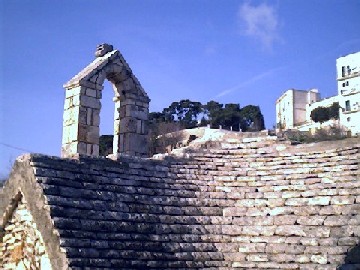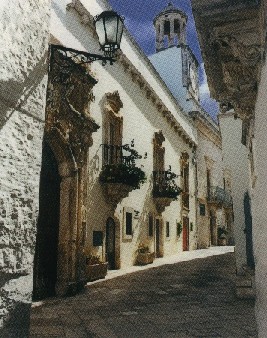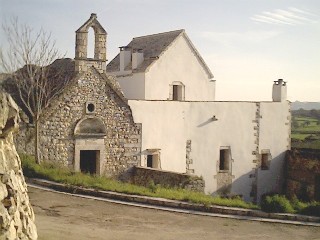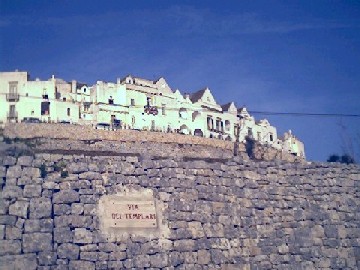|
Next to the old Town Hall
stands the magnificent Palazzo
Morelli, with its
beautiful baroque portal with the bearings of the family from
Catania. In the outside courtyard one immediately notices how
spacious the area around the outside staircase is. This was
characteristic of noble dwellings. From Via Morelli into Via
Dott. Guarnieri and then into Via Dott. Oliva, where half way up
on the right
you see the admirable Church of St. Nicholas. Erected
around 1660 thanks to the initiative of the De Aprile family, it
is hardly recognizable among the houses. The only visible part
is the plain façade, whose bellgabel has unfourtunately
collapsed.
|
|
Inside
the barrel vault and the small dome are entirely covered with
paintings portraying the life of the saint of Mira, the
musician-angels, scenes of hermit life, the four Evangelists and
God the Father surrounded by cherubs. There is only one altar
made of stone, over which there is a broken tympanum niche from
the sixteenth-century with a panel depicting St. Nicolas and
St. Antony of Padua in adoration of the Holy Sacrament. On one
of the walls there is a small stone relief-picture representing
a crucifixion, more ancient than the church itself and of
doubtful origin.
|
|
Continuing
on your itinerary, turning right at the end of the road, you
come to Piazza Fra G. Andrea Rodio, where the massive structure
of the Mother Church
towers above everything; it is a
monumental edifice called after St. George martyr and erected
between 1790 and 1825 on the same site where once stood two
churches, one after the other, which were respectively dated to
1195 and 1500. The neo-sixteenth-century façade, with two rows,
has a relief picture of St. George with the dragon in the
tympanum, and lower down at the end, the statues of St. Peter
and Paul. At the four corners of the church tower, which
overlooks the valley, the statues of the Veronica and the three
Mary, once part of the previous church, can be seen.
|
|
The
flat arched dome, was once covered with multi coloured enamelled
terra-cotta tiles, destroyed by a lightning in 1841. It is
shaped like an inscribed Greek cross and its composition is
characterized by the simple and clear neoclassical style which
blends with the baroque and Renaissance art works survived from
the previous church. Inside, on the left, you find the
altar of the Holy Sacrament
built in Naples in 1764. Very admirable are the 42 stonerelief
pictures, with scenes from the Old and New Testament, sculptured
between 1591 and 1613, the marble altar built in Naples in 1764,
and the canvas of “the Last Supper’ painted in 1841 by the
Neapolitan painter Gennaro Maldarelli.
|
|
|
 |
next
page |
 |
previous
page |
 |
home
page |
 |
photos |
 |
restaurant
& hotels |
|
|
|

|
|
Public
garden and St. Anna's church
|
|
 |
|
Morelli's
palace |
|
 |
|
St. George
in Mother church |
|

|
|
St.
Anna's old church
|
|

|
|
Templari's
street
|
|

